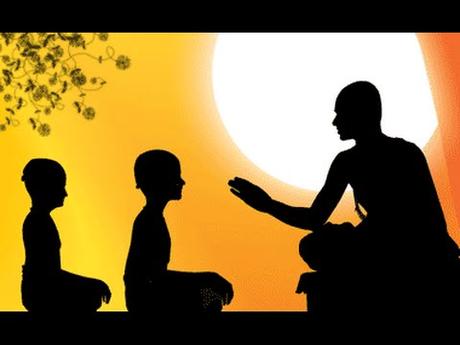What is veda? The word veda is derived from the root vid which means 'to know'. The word veda means the sacred knowledge contained in the texts known as Vedic text. Two categories of texts are included in the corpus of the Vedic literature. These are Mantra and Brahmana. The Mantra category forms the core of the Vedic texts and has four separate collections. These are the Rigveda, the Samaveda, the Yajurveda, and the Atharvaveda. The Brahmanas not to be confused with Brahaminical class are prose texts containing the explanations of the mantras as well as the sacrificial rituals. The four Vedas together with their Brahmanas are also known as shruti or 'hearing', that which was directly heard by the sages. The Aranyakas (literally forest treatises) and the Upanishads (sitting down beside) are mainly appendices to the Brahmanas. These are also known as the Vedanta (end of the Veda) and contain philosophical discussions. A few centuries after the decline of the Harappan civilization, a new culture flourished in the same region and gradually spread across the Ganga-Yamuna plains. This culture came to be known as the Aryan culture. There were significant differences between this culture and the culture which preceded it. Aryans settled on the banks of rivers Indus (Sindhu) and Saraswati (which is now non existent). They composed many hymns in honour of the gods and goddesses they worshipped. These were compiled in four Vedas - the Rig Veda, Sama Veda, Yajur Veda and Atharva Veda. The word veda means knowledge of the sacred spiritual knowledge. These vedas were considered infallible as they imparted the highest spiritual knowledge. Initially the Vedas were transmitted orally. Since our knowledge of the early Aryans is based on these Vedas, the culture of this period is referred to as the Vedic Culture. Scholars divide the vedic period into the earlier and later Vedic period. The earlier is represented by the Rig Veda while the latter by all other Vedic literature including the Brahmanas, Aranyakas and Upanishads. Two epics, the Ramayana and the Mahabharata and the Puranas, though compiled much later, also throw light on the life and society of an earlier period. For this period archaeological evidence has also been found in some areas of Uttar Pradesh. Rig Veda contains about 250 hymns in praise of Indra who is described as a destroyer of cities and there are 200 hymns in praise of God Agni. Though Aryan society was patriarchal, women were treated with dignity and honour. The family was the smallest social unit; several families (kula) made a village (grama) and several villages formed a vis. A number of villages formed a tribe or jana which was ruled by a chief called rajan. His chief function was to protect the tribe from external attack and maintain law and order. He was assisted by the members of two councils called sabha and samiti. The Purohita performed religious functions while the senani looked after military activities. There was no concept of the state or kingdom at this stage. Although the post of Rajan had become hereditary, he could be removed from power if found weak and inefficient or cruel.
Image Credit: youtube.com

